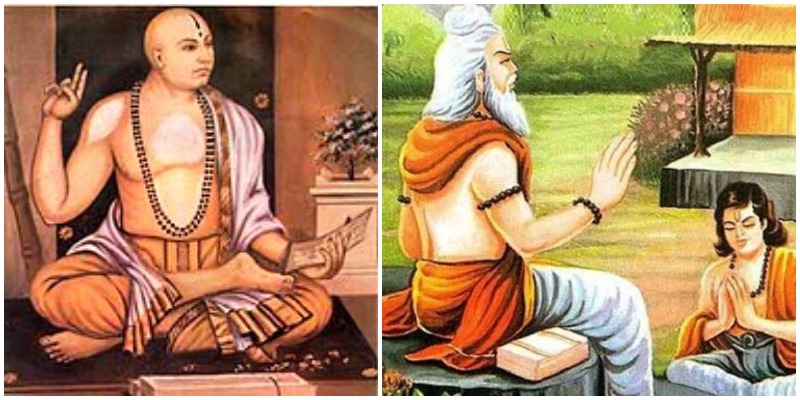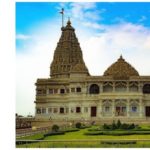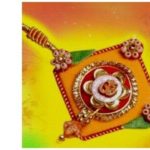India is a land with a culture and heritage that goes back to the beginning of time itself. The Upanishads are part of the rich spiritual heritage of India. The Upanishads are the ancient texts of India which are rooted in the Vedas and form the foundation of Hindu religion, philosophy, and spirituality. The Bhagavad Gita which is part of the great Indian epic, the Mahabharata, is also considered to be an Upanishad in its own right.
Table of Contents
What Are The Upanishads?
The word Upanishad is formed by two words, “Upa”, and “nisad.” These two words in Sanskrit mean, “by,” and, “sit down,” respectively. This refers to a student sitting down in front of a Guru and receiving oral instructions. According to Adi Shankaracharya, the meaning of Upanishad is Atmavidya or knowledge of the self.

The Upanishads are ancient treatises in Sanskrit that are believed to date back to 800-200 BCE and cover various aspects and philosophies of life. Like the Vedas, no authorship of the Upanishads can be ascertained and they remain esoteric, anonymous, and timeless texts, that disseminate a deep insight and philosophy of the nature of life and matter.
The Upanishads have played a vital role in the development of spiritual thought in India, whether it be in Hinduism or Buddhism or Jainism.
How many Upanishads are there?
Traditionally it is believed that there are about 108 Upanishads that include minor and major Upanishads. However, it is also believed that there may be more than 200 Upanishads in existence. The Upanishads are essentially corollaries to the Vedas, and every Upanishad is associated with one of the four Vedas, namely, Rigveda, Samveda, Yajurveda, and Atharvaveda.
Which Are The Main Upanishads?
The principal Upanishads are known as Mukhya Upanishads and have been widely studied and written about by philosophers and spiritual masters from India and the western world.
Here is the list of the main Upanishads:
- Isa
- Kena
- Katha
- Prasna
- Mundaka
- Mandukya
- Taitttriya
- Aitareya
- Chandogya
- Brihadaranyaka
Brief Synopsis of the Mukhya Upanishads

Here is a brief summary of the main Upanishads with information on what aspects they deal with and which Veda they are related to.
Isa Upanishad
The Isa Upanishad is part of the Shukla Yajurveda and is in fact its final chapter. It is one of the shortest Upanishads and consists of about 18 verses. This Upanishad deals with the theme of the oneness of the Atma and Paramatma, the soul and God.
Famous Quote From Isa Upanishad
Asato ma sad-gamaya; tamaso ma jyotir-gamaya; mrtyor-ma amrutam gamaya.
Lead me from unreal to real; lead me from darkness to light; lead me from death to immortality.
Kena Upanishad
The Kena Upanishad is considered to be the most metaphysical and analytical of the Upanishads. It is part of the Samveda and its objective is to show the path from the gross to the subtle and from the effect to the cause.
Famous Quote From Kena Upanishad
“That which cannot be perceived by the eye, but by which the eye is perceived—That alone know as Brahman and not that which people here worship.”
Katha Upanishad
The Katha Upanishad is part of the Krishna Yajurveda. This Upanishad is known for the dialogue between Nachiketa and Yama and has several similarities with the dialogue between Arjuna and Krishna in the Bhagavad Gita. The Upanishad also explains the importance of Aum and that of Yoga.
Famous Quote From Katha Upanishad
“The sharp edge of a razor is difficult to pass over; thus the wise say the path to Salvation is hard.”
Prasna Upanishad
The Prasna Upanishad is associated with the Atharva Veda. It is in the form of questions and answers. The Prasna Upanishad is in the form of six questions that are asked by six seekers of truth and answered by the Guru Pippalapada. The questions cover a wide spectrum of topics like the origin of creation, the nature of sleep and dreams, the benefits of chanting the sacred mantra Aum, etc.
Famous Quote From Prasna Upanishad
oṃ bhadraṃ karṇebhiḥ śṛṇuyāma devāḥ |
bhadraṃ paśyemākṣabhir yajatrāḥ
sthirair aṅgais tuṣṭuvāṃsas tanūbhiḥ |
vyaśema devahitam yadāyuḥ |
svasti na indro vṛddhaśravāḥ |
svasti naḥ pūṣā viśvavedāḥ |
svasti nas tārkṣyo ariṣṭanemiḥ |
svasti no bṛhaspatir dadhātu
oṃ śāntiḥ śāntiḥ śāntiḥ ||
Om! O gods, may we hear auspicious words with the ears;
While engaged in yagnas,
May we see auspicious things with the eyes;
While praising the gods with steady limbs,
May we enjoy a life that is beneficial to the gods.
May Indra of ancient fame be auspicious to us;
May the supremely rich (or all-knowing) Pusa (god of the earth)
Be propitious to us;
May Garuda, the destroyer of evil,
Be well disposed towards us;
May Brihaspati ensure our welfare.
Om! Peace! Peace! Peace!
Mundaka Upanishad
The Mundaka Upanishad is associated with the Atharva Veda. It is a collection of philosophical shlokas or poems that are used to inculcate spiritual knowledge and foster meditation.
Famous Quote From Mundaka Upanishad
“Satyameva Jayate”
Truth Alone Triumphs.
Mandukya Upanishad
The Mandukya Upanishad is associated with the Rig Veda. It is one of the shortest of the Upanishads in prose form. This Upanishad deals with the mystical syllable Aum and its meditation.
Famous Quote From Mandukya Upanishad
“Ayam Atma Brahma.”
This Self is Brahma
Taittiriya Upanishad
The Taittiriya Upanishad forms three chapters of the Krishna Yajurveda. This Upanishad deals with many aspects of creation and evolution.
Famous Quote From Taittiriya Upanishad
The enlightened man is not afflicted by the remorse as to Why did I not perform good deeds, and why did I perform bad deeds?
Aitareya Upanishad
The Aitareya Upanishad is associated with the Rigveda. The Aitareya Upanishad deals with aspects of creation, food, and consciousness.
Famous Quote From Aitareya Upanishad
“Prajñānam Brahma.”
Consciousness is Brahman
Chandogya Upanishad
The Chandogya Upanishad is associated with the Samveda. It is considered to be one of the core texts of Vedanta. It primarily deals with the significance and importance of Mantras including Aum and their role in attaining salvation.
Famous Quote From Chandogya Upanishad
“Tat Tvam Asi.”
That Thou Art.
Brihadarnayaka Upanishad
The Brihadarnayaka Upanishad is associated with the Yajurveda. The Brihadarnayaka Upanishad is credited to Yajnavalkya and is one of the oldest of the Upanishads.
Famous Quote From Brihadaranyaka Upanishad
“Aham Brahmasmi.”
I am Brahma.
We hope you liked our post about the Upanishads. Do spend some time reading and reflecting on the deep meanings that are hidden in the powerful mantras of these great and ancient texts.
Om Shanti!
Thanks for visiting our site nirvandiaries.com and taking the time to read this post.
If you wish to collaborate or work with us then reach us at [email protected]
We’d love if you’d comment by sharing your thoughts on this post and share this post on social media and with your friends.
Follow our journey on our social media channels:
Facebook Twitter Instagram Pinterest







